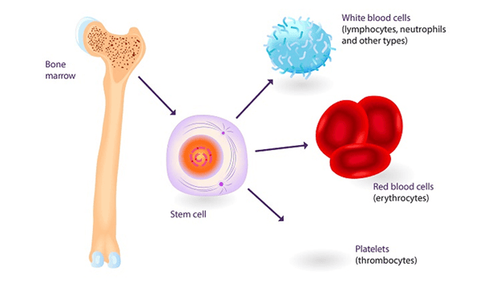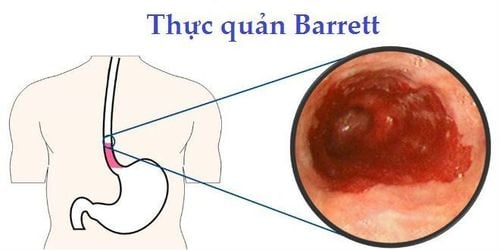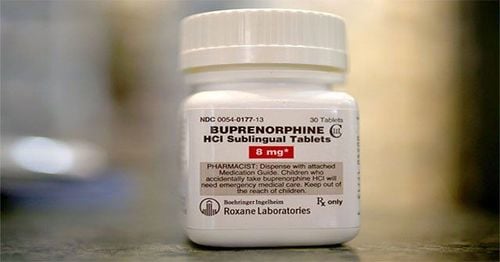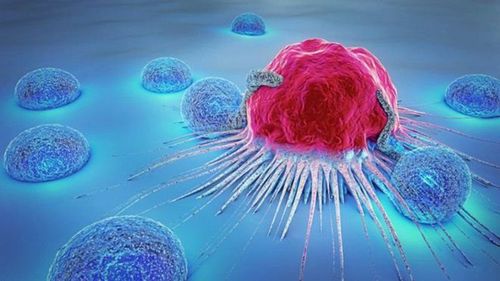This is an automatically translated article.
Normal cells can become cancerous cells through a number of processes. Before cancer forms, those cells undergo abnormal changes called hyperplasia and dysplasia. However, hyperplasia and dysplasia may or may not form cancer.1. Definition of cancer
Cancer is a disease in which certain cells of the body grow uncontrollably and spread to other parts of the body. Cancer can start almost anywhere in the body, they are made up of trillions of cells.Normally, cells grow and multiply through a process called cell division to form new cells when the body needs them. As cells age or become damaged, they die and new cells take their place.
Sometimes this orderly process is disrupted and abnormal or damaged cells grow and multiply. These cells can form tumors. Tumors may not be cancerous or cancerous.
Tumors are cancers that have spread into or invaded nearby tissues and can travel to distant places in the body to form new tumors. Cancerous masses may also be called malignancies. Many cancers form solid tumours, but leukemia does not.
Benign tumors do not spread or invade nearby tissues. When removed, benign tumors usually do not grow back, while cancerous tumors can grow back. However, benign tumors can be quite large. Some types cause severe or life-threatening symptoms, such as benign tumors in the brain.
Cancer has a long incubation period and most patients do not have obvious symptoms. Therefore, in order to detect cancer early and treat it promptly, doctors recommend regular health check-ups every 6 months.
Trắc nghiệm: Thử hiểu biết của bạn về bệnh ung thư
Ung thư là nguyên nhân gây tử vong hàng thứ 2 trên thế giới. Thử sức cùng bài trắc nghiệm sau đây sẽ giúp bạn có thêm kiến thức về yếu tố nguy cơ cũng như cách phòng ngừa bệnh ung thư.
Bài dịch từ: webmd.com
2. The difference between cancer cells and normal cells
Cancer cells have many characteristics that are different from normal cells such as:Cancer cells grow in the absence of signals. Whereas normal cells only grow when they receive these signals. Cancer cells ignore the signals that tell the cells to stop dividing or die (a process known as programmed cell death or apoptosis). Cancer cells invade nearby areas and spread to other areas of the body. Whereas normal cells stop growing when they meet other cells and most normal cells don't move around in the body. Blood vessels grow towards the tumor. These blood vessels provide oxygen and nutrients for the tumor to grow and remove waste products from the tumor. Cancer cells hide from the immune system. Cancer cells trick the immune system into surviving and growing. For example, some cancer cells "convince" immune cells to protect the tumor instead of attacking it. Cancer cells accumulate many changes in their chromosomes, such as duplication and deletion of chromosome sections. Some cancer cells have twice as many chromosomes as normal cells. Cancer cells rely on different types of nutrients than normal cells. In addition, some cancer cells can make energy from nutrients in a different way than most normal cells. This allows cancer cells to grow faster. Many times, cancer cells are so dependent on these abnormal behaviors that they cannot survive without them. Researchers have taken advantage of this fact, developing therapies that target the abnormal characteristics of cancer cells.

3. How does cancer develop?
Cancer is caused by changes in genes that control how cells work, especially how cells grow and divide abnormally. The genetic changes that cause cancer can be caused by:An error occurs while cells divide. DNA damage is caused by harmful substances in the environment, such as chemicals in cigarette smoke and ultraviolet rays from the sun. Inherited genes from parents, family members. The body normally gets rid of cells with damaged DNA before they turn cancerous. But that ability of the body decreases as we age. This is part of the reason why there is a higher risk of cancer as we age.
4. Types of genes that cause cancer
The genetic changes that contribute to cancer tend to affect three main types of genes, namely proto-oncogenes, tumor suppressor genes, and DNA repair genes. Sometimes, these changes are called the "drivers" of the cancer.Oncogenes are involved in normal cell growth and division. When these genes are more active than normal or changed in certain ways, they can become oncogenes that allow cells to grow and survive.
Tumor suppressor genes are also involved in controlling cell growth and division. Cells with certain changes in this gene can divide uncontrollably.
DNA repair genes have a role in repairing damaged DNA. Cells with mutations in DNA repair genes tend to develop additional mutations in other genes and changes in the cell's chromosomes, such as chromosome duplication and deletion.
These gene mutations can combine to cause cells to become cancerous. Scientists have discovered that certain gene mutations are common in many different types of cancer.
Currently, there are many cancer treatments that target the gene mutations found in cancer. Some of these treatments can be used by anyone with cancer that has a targeted mutation, regardless of where the cancer started.

5. Metastatic cancer
When cancer cells break out of the place where they first formed (primary cancer), travel through the blood system or lymph nodes to other parts of the body and form a cancerous mass there. called metastasis.The metastatic cancer will have the same name and the same type of cancer cells as the primary cancer. For example, breast cancer forms a metastatic tumor in the lung called metastatic breast cancer.
When viewed under a microscope, metastatic cancer cells often resemble those of the original cancer. Furthermore, metastatic cancer cells and cells of the primary cancer often share some common molecular features such as specific chromosomal alterations.
In some cases, treatment can help prolong the lives of people with metastatic cancer. In other cases, the main goal of treating cancer that has spread is to control the growth of the cancer or relieve the symptoms it causes. Metastatic tumors can seriously damage the way the body works, and most people who die from cancer have metastases.
6. Cancer can start with tissue changes
Not every change in the body's tissues causes cancer. However, there are several types of tissue changes that, if left unchecked, can develop into cancer, which are:Hyperplasia: This process occurs when the cells in the tissue multiply faster than normal and excess cells accumulate. However, the characteristics of the cells and tissue organization still look normal under the microscope. This phenomenon can be caused by a number of factors or conditions, including chronic irritation. Dysplasia: This is a more advanced condition than hyperplasia. In this process there is also an accumulation of extra cells. But the cells formed by dysplasia don't look normal and there are changes in tissue organization. The more abnormal the cells and tissues, the higher the chance of cancer forming. Carcinoma in situ: An even more severe condition. Although it is sometimes called stage 0 cancer, it is not cancer because the abnormal cells do not invade nearby tissue the way cancer cells do. Because some carcinomas in situ can become cancerous, they often require treatment when discovered. Currently, early cancer screening is considered the perfect measure in timely detection and treatment of cancers. Reduce the cost of treatment and especially reduce the mortality rate in patients. Vinmec International General Hospital always deploys and introduces to customers the Early Cancer Screening Package at Vinmec - Peace of mind to live well to help with gene testing, imaging, testing of biomarkers to detect tumors you early.
Choosing the Early Cancer Screening Package at Vinmec - Peace of mind at Vinmec, customers will get:
Only one gene test can assess the risk of 16 common cancers in both men and women ( lung cancer, colorectal cancer, breast cancer, pancreatic cancer, cervical cancer, stomach cancer, prostate cancer,...). Early detection of early signs of cancer through imaging, endoscopy and ultrasound. The operation is simple, careful and accurate. A team of well-trained specialists, especially in oncology, are capable of handling cancer cases. With a system of facilities, advanced and modern medical equipment and a team of doctors with deep expertise and experience, it will help the examination and treatment process of patients at Vinmec become faster with High efficiency, save cost and time.
Please dial HOTLINE for more information or register for an appointment HERE. Download MyVinmec app to make appointments faster and to manage your bookings easily.
References: cancer.gov, cancer.ca












